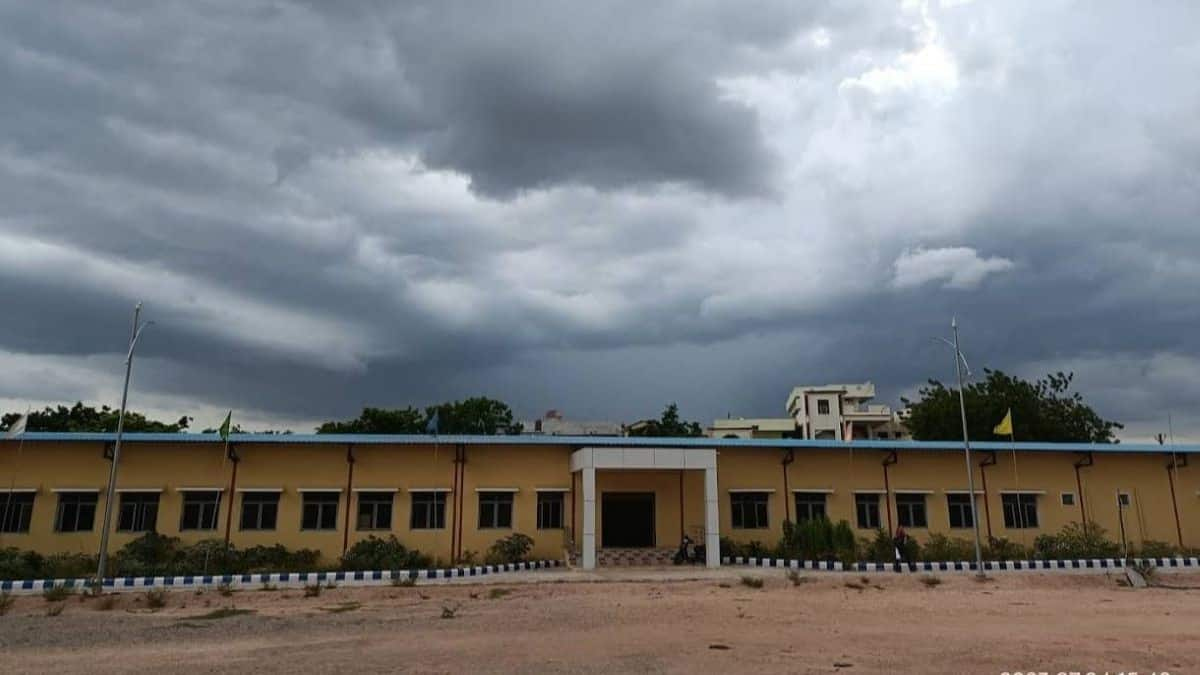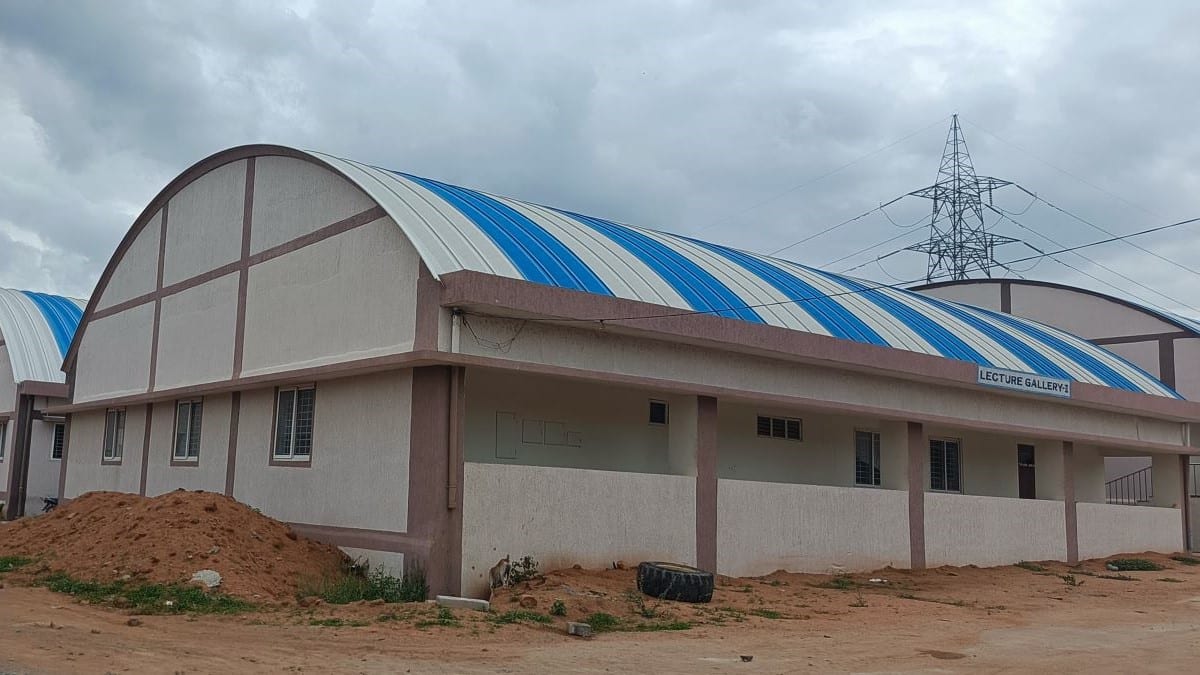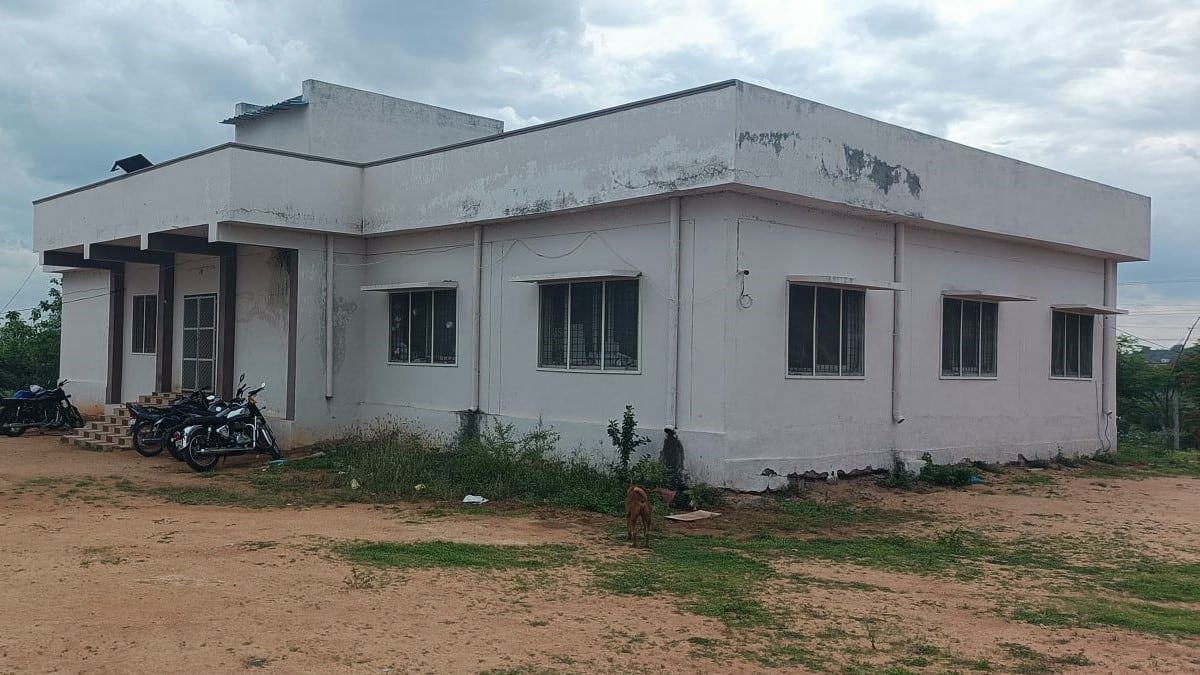‘Don’t know how NMC permitted’: New medical colleges started without faculty or equipment, say students
Musab Qazi | June 23, 2025 | 12:06 PM IST | 10 mins read
NEET Counselling: Online study; dining in libraries; sharing a room with 7 others; space, cadaver, teacher shortage – life for medical students at some of the 380 new medical colleges
NEET 2026 Free Mock Test with Solutions
Download the NEET 2026 Free Mock Test PDF with detailed solutions. Practice real exam-style questions, analyze your performance, and enhance your preparation.
Download EBook
In January, 2025, students of Government Medical College (GMC) Asifabad, Telangana, boycotted classes. Set up two years ago, the GMC is short of teachers, space, transportation, even cadavers – everything required for quality medical education. The only change the protests yielded was improved sanitation; the college continues to struggle.
“We don't have sufficient teachers,” said a student, asking not to be named. “Some of the lectures were conducted online by some other faculty. In the first year, 100 students had only two cadavers to work with. As there’s no college hostel, we are accommodated in what used to be the collector office and storage spaces. Eight people are crammed in a single room. The most important issue is transportation – we did get a bus initially, but it hasn’t been operating since September last year. The attached district hospital is small."
The complaints are serious but familiar.
During her budget speech earlier this year, finance minister Nirmala Sitharaman had announced an ambitious goal of adding 75,000 MBBS seats in medical colleges – 10,000 in the upcoming year. She also underscored the unprecedented expansion of medical education in the country over the last decade – 1.1 lakh new undergraduate (MBBS) and postgraduate (MD, MS) seats, a 130% increase.
The exponential rise has been possible, in large parts, due to a centrally sponsored scheme to upgrade district and referral hospitals to medical colleges. Of the 157 new colleges approved by the centre, 131 are operational. The centre’s bid to open All India Institute of Medical Sciences (AIIMS) in various states has also contributed to the growth; 19 of the 22 planned national institutes have begun functioning.
The spurt has drawn cheers from lakhs of National Eligibility-cum-Entrance Test (NEET) aspirants. However, it has also raised concerns about the way state governments, aided by a willing regulator, went about establishing new institutes.
Conversations with students and their parents, resident doctors and faculty members at around 20 new medical colleges in Uttar Pradesh, Maharashtra and Telangana – states that got the lion’s share of these institutes – reveal that the hasty approvals have come at the cost of glaring shortcomings in faculty, infrastructure and clinical facilities.
Also read NMC chief’s mantra for regulating medical colleges: ‘Friendly handshake, less policing’
The entrance test results were declared on June 14 and NEET counselling – the process of assigning seats to applicants for MBBS admission – is yet to start.
GMC: Sudden spurt, poor infrastructure
According to data on the NMC website, there are 760 institutes nationwide running MBBS courses. While the first of them – Madras Medical College, Chennai – came up almost two centuries ago in 1838, more than half of them – 384 – were founded in a span of 10 years since 2015. While the annual approvals for new UG colleges never crossed 25 until 2015, it jumped to 39 the next year and kept climbing to 54 in 2023. A record 74 new colleges were greenlit last year.
Almost all the new colleges fall short on meeting the National Medical Commission’s (NMC) faculty norms. While the regulator, since 2023, has more stringent standards in place for colleges, it decided to relax them during the last year’s approvals. At some institutes, the teacher shortage was so severe that the institute had to arrange online lectures by faculty at other institutes for some of the subjects.
Telangana has witnessed the sharpest rise in the number of medical colleges in recent years. Until 2021, it had 34 colleges offering MBBS, but in the last three years, it added 31 new ones. This proliferation was a result of the state’s aim of setting up at least one government medical college (GMC) in each of its 33 districts – a distinction it managed to achieve last year.
Of UP’s 86 UG medical colleges, 40 were set up since 2019, 18 of which were recognised in 2024 alone. NMC had approved 13 of them after initial disapproval. The state, too, has resolved ‘one district, one medical college’ and has managed to cover most of its districts.
Maharashtra got 12 new colleges last year, taking its tally to 80. Most of these institutes are located in the backward Vidarbha and Marathwada regions. Eight got approval only after the state agreed to overcome the gaps in infrastructure and faculty.
Many of the new colleges, at least in Telangana and Maharashtra, have been temporarily set up in old buildings, as permanent campuses are still under construction. Vacant or abandoned government properties have been repurposed into classrooms, laboratories and offices. Some have been housed in leased private spaces, several lack dedicated hostels, with students and faculty accommodated in rented apartments.
Thanks to the paucity of land, most of the academic blocks and hostels have been set up on the outskirts. While some colleges provide buses for commuting, in others students are required to arrange their own transportation to cover as much as 10 kilometres. A number of students have complained about unhygienic accommodation, power outages, and inadequate water supply. The remoteness of the colleges is also a safety issue.
 Lecture galleries of GMC Jangaon (Telangana)
Lecture galleries of GMC Jangaon (Telangana)
Telangana GMCs: ‘Don’t know how NMC permitted’
Established in 2022, GMC Bhadradri Kothagudem witnessed a student strike earlier this year over inadequate facilities and ‘harassment’ by the college principal. Located in a remote forest area, the college fails to attract new faculty members.
In the first year of the course, some classes had to be conducted online thanks to an acute faculty crunch. There aren’t separate labs for subjects – physiology and anatomy labs double up as pathology and microbiology labs. Accommodation has been provided in seven-eight buildings scattered around the town, anywhere between two and seven kilometers away from the attached government hospital. The district’s Maternity and Child Health (MCH) Centre – also attached to the college – is further away with no transport facility provided by the institute. There’s no food mess, drinking water is to be purchased from outside, the permanent building is still under construction and unlikely to be completed by the time the first batch graduates.
There are complaints about the hospital too. “It was first upgraded as a district hospital and then as a medical college. But its condition hasn’t changed. Most of the time, X-ray, CT scan and MRI scan are not available. Only abdomen and ultrascan are available, that too once a week. We get to see only basic cases. Complicated cases are diverted to higher centres,” said the student. In March, medical students marched to the district collectorate to demand better facilities, but to no avail.
Similar problems were narrated by students at other colleges. For instance, GMC Mancherial and GMC Jagtial, both set up in metal sheet-roofed warehouses, look far from functioning medical colleges and face space crunch.
The GMC Nirmal building is on a hill and lacks basic amenities like a compound wall. There are few regular teachers for first year subjects such as physiotherapy and anatomy. There are no sanitation workers. Students are yet to start practicals in microbiology, pathology and pharmacology, as there is no equipment or laboratories. The construction of the new building has begun only recently.
“We have complained to the collector but no action has been taken. The principal says that he can’t do anything as he is only an in-charge principal. We don’t know how NMC even permitted them,” said a student from the college.
The library at GMC Jangaon is used as a dining room. Despite it being stocked with books, students are not allowed to borrow them. There is no air conditioning.
There are regular electricity outages at GMC Kamareddy. With no power backup, everything gets shut. Students couldn’t perform practicals in the first year since there was no lab equipment. GMC Yadadri students too suffer from unreliable electricity and water supply.
The lack of its own campus caused a peculiar problem at GMC Maheshwaram, when the owners of the engineering college building, which was leased by the institute, briefly locked down the premises reportedly over unpaid rent, claimed a student.
A Narendra Kumar, director, Telangana directorate of medical education, didn’t respond to calls or messages by Careers360.
UP NEET Colleges: ‘Studying on apps’
In Uttar Pradesh, in addition to faculty, equipment and cadaver shortages, the attached hospitals are awaiting several upgrades. And much like Telangana, academic blocks and hostels are built at considerable distances, adding to the commuting woes.
“Except for the building, everything is down here,” says an assistant professor at the Autonomous State Medical College (ASMC) Lakhimpur Kheri, which started last year.
The medical college hardly has any senior faculty, with assistant professors filling most of the teaching positions. Classes are regular but laboratories aren’t up to the mark. A new hospital building is being constructed. However, the hospital is yet to get digital X-ray and CT scan facilities as well as a C-Arm machine. For cases like head injury, patients are either referred to Lucknow or sent to private hospitals. Similar lacunae were reported at ASMC Auraiya, also set up last year.
Also read ‘Beard like clergyman’: Muslim NEET SS aspirant moves NMC as hospital asks him to shave; quits seat
A faculty member at ASMC Ayodhya, established in 2019, claimed that while the college has everything ‘on paper’ there are clear deficiencies on ground. To him the biggest issue is the unhygienic and hot conditions at the hospital and staff quarters, which contribute to infections. Medicines and equipment are in a short supply. Some departments, such as anaesthesia, have an acute manpower shortage.
While students are expected to report to the hospital everyday from the second year of MBBS for clinical training, the faculty claims that most skip it. The only training that the first batch to graduate from the institute received was during their internship.
The faculty blamed the authorities for allowing new colleges en masse. “No one has fulfilled the norms. They are producing doctors who are not skilled. Students are studying through online apps,” he added.
According to Shubhanshu Srivastava, president of the UP Resident Doctors’ Association and a senior resident at ASMC Kanpur Dehat, the main issue is the peripheral location of the new colleges. “Security is a big problem. Late night internships might become an issue. We have discussed it with the authorities… Delivery services like Amazon, Zomato and Flipkart aren’t available here,” he said.
Careers360 couldn’t reach Kinjal Singh, UP’s director general of medical education, for a comment.
 GMC Jangaon's boys hostel
GMC Jangaon's boys hostel
Maharashtra Med Schools: Fewer complaints
In Maharashtra, too, some of the new colleges and hostels are being run in refurbished old buildings, but students have relatively fewer complaints.
GMC Hingoli has classrooms equipped with smartboards and sound systems. The practicals, though, began a few months late due to a delay in installing equipment. At GMC Washim, anatomy dissections could start only after cadavers came in January this year. GMC Gadchiroli students are yet to begin their biochemistry practicals, as the lab has been set up only recently. Students have largely found the temporary infrastructure facilities satisfactory.
Students at GMC Jalna reported faculty shortages in some departments, but they said the gap was covered by existing faculty and guest lecturers. They, too, however, faced delays in practical sessions due to late arrival of reagents and cadavers.
Rajiv Nivatkar, the state medical education commissioner, assured that the state government is filling the vacant posts and constructing permanent infrastructure.
“We have already hired 1,192 faculty at all levels as well as across new and old medical colleges. An additional requisition for 200 teachers has been made to the Maharashtra Public Service Commission (MPSC). Last year, we had also carried out a hiring process for 5,181 non-teaching staff, including nurses and technicians. We have mostly covered the deficiencies in the first year MBBS and will now take care of the second year,” he said.
Nivatkar added that around 70% of the construction has already been started with an aim to complete it within two and a half years.
When asked about NMC not adhering to the new Minimum Standard Regulations Under-Graduate (MSR-UG) 2023 norms for the latest cycle of approvals, commission chairman BN Gangadhar said that they gave some “margin to the colleges” as the new norms were being enforced for the first time. “We will increase our standards in a year or two. There was a trade-off between enforcing standards and being practical. In the days to come, people will start seeing reason in it,” he said.
Follow us for the latest education news on colleges and universities, admission, courses, exams, research, education policies, study abroad and more..
To get in touch, write to us at news@careers360.com.